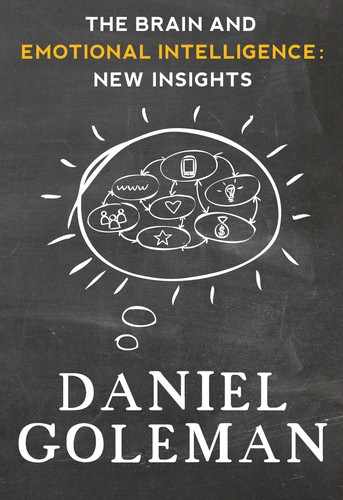The Varieties of Empathy
The core skill in social awareness is empathy – sensing what others are thinking and feeling, without them telling us in words. We are continually sending others signals about our feelings through our tone of voice, facial expression, gestures, and numerous other nonverbal channels. People vary greatly in how well they can read these signals.
There are three kinds of empathy. One is cognitive empathy: I know how you see things; I can take your perspective. Managers high in this kind of empathy are able to get better than expected performance from employees, because they can put things in terms that people can understand – and that motivates them. And executives higher in cognitive empathy do better in foreign postings, because they pick up the unspoken norms of a different culture more quickly.
A second kind is emotional empathy: I feel with you. This is the basis for rapport and chemistry. People who excel in emotional empathy make good counselors, teachers, client managers, and group leaders because of this ability to sense in the moment how others are reacting.
And the third kind is empathic concern: I sense you need some help and I spontaneously am ready to give it. Those with empathic concern are the good citizens in a group, organization, or community, who voluntarily help out as needed.
Empathy is the essential building block for compassion. We have to sense what another person is going through, what they're feeling, in order to spark compassion in us. There's a spectrum that runs from total self-absorption (where we don't notice other people) to noticing them and beginning to tune in, to empathizing, to understanding their needs and having empathic concern – and then comes compassionate action, where we help them out.
Different varieties of empathy seem to rely on distinct brain circuitry. Emotional empathy, for instance, has been studied by Tania Singer, a neuroscientist at the Max Planck Institute in Germany28. Singer sees the role of the insula as key to empathy (the insula, remember, was one of the neural areas identified as crucial to emotional intelligence). The insula senses signals from our whole body. When we're empathizing with someone, our mirror neurons mimic within us that persons’ state. The anterior area of the insula reads that pattern and tells us what state that is.
Singer finds that reading emotions in others means, at the brain level, first reading those emotions in ourselves; the insula lights up when we tune into our own sensations29. She’s done FMRI studies of couples, for example, where one partner is getting a brain scan while is seeing that the other partner is about to get a shock. At the moment the partner sees this, the part of his or her brain lights up that would do so if he or she were actually getting the shock, rather than just seeing the partner get it.
Paul Ekman, the world's expert on facial expression of emotions, is the scientist on whom the TV show Lie to Me is based; the lead character solves crimes by detecting how people truly feel rather than what they are trying to project. He detects their lies through subtle nonverbal “leakage” of their true feelings. Ekman has designed a training program (which seems aimed at this mirror neuron-insula circuitry) that lets us read facial expressions that flash across a person’s face in a fifth of a second, too fast for us to consciously recognize. Through this training program people can improve their recognition of fleeting – but revealing – emotions on another person’s face, in about an hour.
To develop greater empathy abilities, one route would be to go through the Ekman training. But to develop cognitive empathy, getting feedback on what the other person actually is thinking would be the recommended route – to verify or correct your hunches. Another method for boosting empathy has people watch a video or film without the sound and guess the emotions being depicted onscreen, checking their guesses against the actuality. In other words, giving the neural circuits for empathy feedback on how the other person actually feels or thinks helps this circuitry learn.
